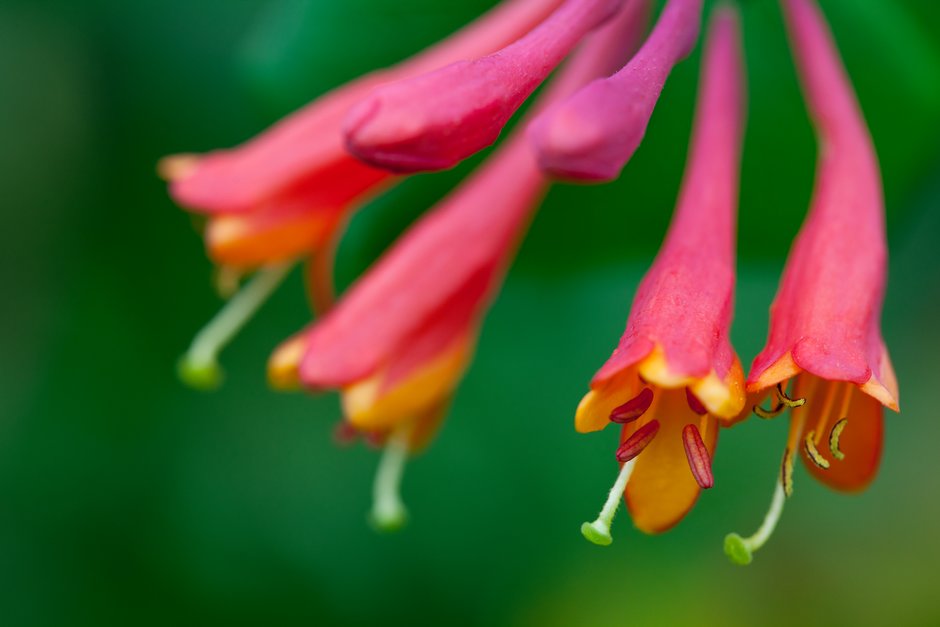Lonicera × brownii 'Dropmore Scarlet'
honeysuckle 'Dropmore Scarlet'
A vigorous semi-evergreen climber with rounded blue-green leaves and terminal clusters of narrowly trumpet-shaped bright scarlet flowers over a long period from mid summer to late autumn
Synonyms
Lonicera × brownii 'Fuchsioides' misappliedLonicera 'Dropmore Scarlet'
see moreLonicera sempervirens 'Dropmore Scarlet'
Size
Ultimate height
2.5–4 metresTime to ultimate height
5–10 yearsUltimate spread
0.5–1 metresGrowing conditions
Moisture
Moist but well–drainedpH
Acid, Alkaline, NeutralColour & scent
| Stem | Flower | Foliage | Fruit | |
| Spring | Blue Green | |||
|---|---|---|---|---|
| Summer | Red | Blue Green | ||
| Autumn | Red | Blue Green | ||
| Winter | Blue Green |
Position
- Full sun
- Partial shade
Aspect
North–facing or West–facing or South–facing or East–facing
Exposure
Exposed or Sheltered Hardiness
H5Botanical details
- Family
- Caprifoliaceae
- Native to GB / Ireland
- No
- Foliage
- Semi evergreen
- Habit
- Climbing
- Potentially harmful
- Fruit are ornamental - not to be eaten. Wear gloves and other protective equipment when handling. Pets: Fruit are ornamental - not to be eaten - see the HTA guide to potentially harmful plants for further information and useful contact numbers
- Genus
Lonicera can be deciduous and evergreen shrubs, or climbers with twining stems. The tubular or two-lipped flowers, often very fragrant, are followed by red or black berries
- Name status
Accepted
How to grow
Cultivation
Grow in fertile, humus-rich moist but well-drained soil. Best in partial shade but tolerant of full sun
Propagation
Softwood, semi-ripe or leaf bud cuttings from late spring to late summer
Suggested planting locations and garden types
- Coastal
- Cottage and informal garden
- City and courtyard gardens
- Wall side borders
- Flower borders and beds
Pruning
Pests
May be susceptible to honeysuckle aphids, Thrips and glasshouse whitefly
Diseases
May be susceptible to powdery mildews, fungal leaf spot, silver leaf and honey fungus (rarely)
Get involved
The Royal Horticultural Society is the UK’s leading gardening charity. We aim to enrich everyone’s life through plants, and make the UK a greener and more beautiful place.
